15 Condos That Lost The Most Money In 2024 (Largest At $2.5m!)
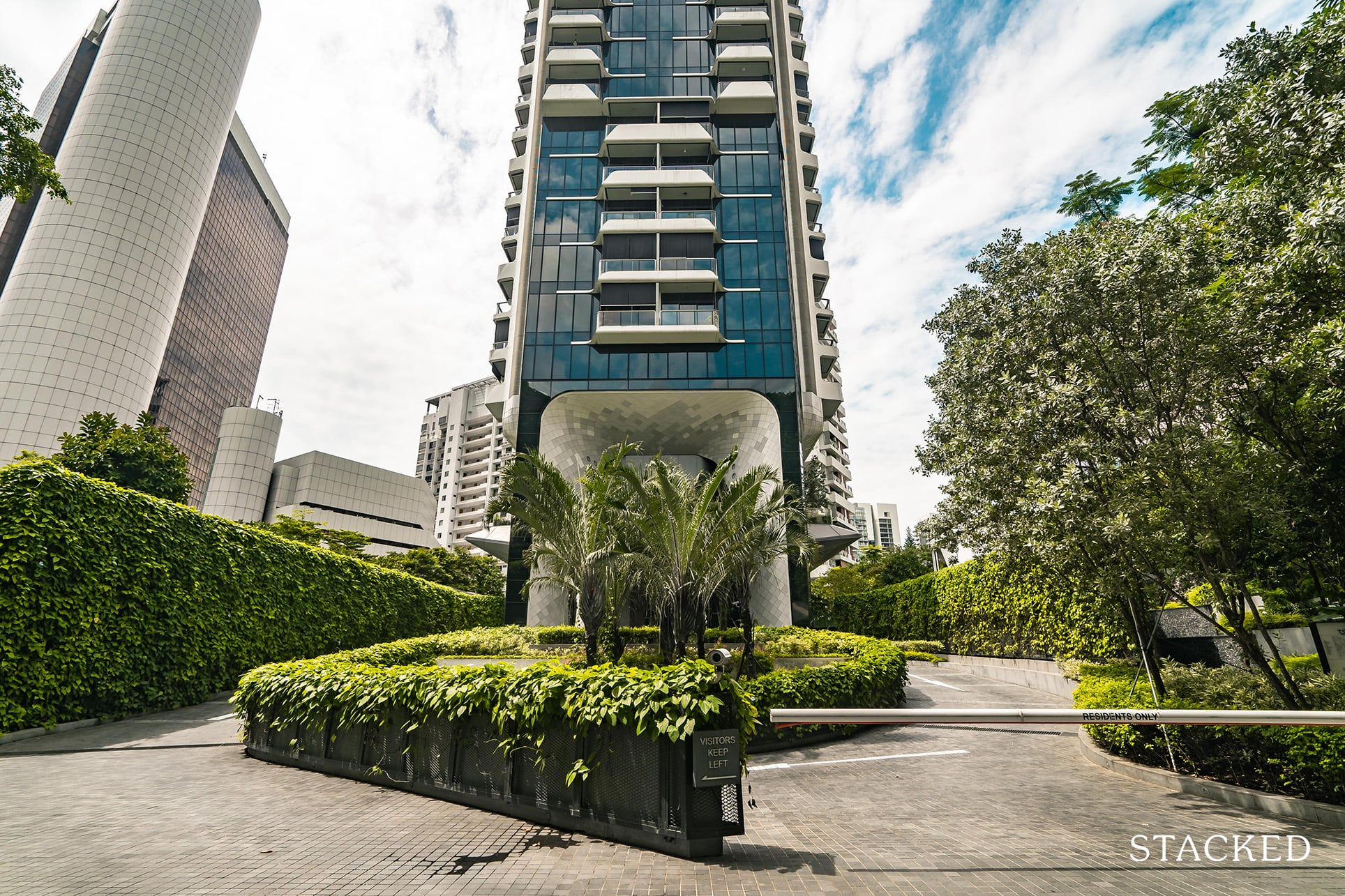
Get The Property Insights Serious Buyers Read First: Join 50,000+ readers who rely on our weekly breakdowns of Singapore’s property market.
A seasoned content strategist with over 17 years in the real estate and financial journalism sectors, Ryan has built a reputation for transforming complex industry jargon into accessible knowledge. With a track record of writing and editing for leading financial platforms and publications, Ryan's expertise has been recognised across various media outlets. His role as a former content editor for 99.co and a co-host for CNA 938's Open House programme underscores his commitment to providing valuable insights into the property market.
Singaporeans are so inundated with stories of property tycoons, million-dollar profits, and “safe haven” theories, we forget that property can sometimes become a liability. While it’s far from the norm, some property owners do get burned when it comes to resale gains; and the losses can be more substantial than expected. Consider the following properties which, despite 2024 still being a fairly high point in the market, managed to rack up losses:
Condos that saw the biggest losing transactions in 2024
| Project | Bought At | Bought Date | Size (Sq Ft) | Sold At | Sold Date | Loss ($) | Loss (%) |
| THE LUMOS | $8,220,450 | 8/8/07 | 2,433 | $5,700,000 | 25/4/24 | -$2,520,450 | -31% |
| TURQUOISE | $5,473,600 | 29/10/07 | 2,164 | $3,000,000 | 12/1/24 | -$2,473,600 | -45% |
| CITYVISTA RESIDENCES | $8,074,106 | 26/7/07 | 2,809 | $5,800,000 | 7/5/24 | -$2,274,106 | -28% |
| MARINA BAY SUITES | $7,700,000 | 22/6/15 | 2,691 | $5,650,000 | 21/5/24 | -$2,050,000 | -27% |
| HILLTOPS | $6,535,442 | 12/10/07 | 1,550 | $4,600,000 | 21/6/24 | -$1,935,442 | -30% |
| SEASCAPE | $6,800,000 | 24/10/13 | 2,680 | $5,050,000 | 8/5/24 | -$1,750,000 | -26% |
| HELIOS RESIDENCES | $6,304,100 | 30/7/07 | 1,916 | $4,600,000 | 10/1/24 | -$1,704,100 | -27% |
| THE SCOTTS TOWER | $2,686,828 | 17/1/13 | 657 | $1,300,000 | 24/4/24 | -$1,386,828 | -52% |
| MARINA BAY SUITES | $6,288,000 | 23/12/09 | 2,680 | $5,000,000 | 31/1/24 | -$1,288,000 | -20% |
| MARINA BAY RESIDENCES | $4,050,000 | 24/5/11 | 1,227 | $2,800,000 | 22/3/24 | -$1,250,000 | -31% |
| THE SAIL @ MARINA BAY | $3,715,392 | 17/6/11 | 1,184 | $2,550,000 | 25/4/24 | -$1,165,392 | -31% |
| HELIOS RESIDENCES | $5,360,220 | 31/7/07 | 1,916 | $4,250,000 | 5/6/24 | -$1,110,220 | -21% |
| OUE TWIN PEAKS | $4,435,000 | 18/8/10 | 1,399 | $3,330,000 | 13/6/24 | -$1,105,000 | -25% |
| MARINA BAY SUITES | $4,397,000 | 31/5/10 | 1,572 | $3,300,000 | 6/5/24 | -$1,097,000 | -25% |
| 111 EMERALD HILL | $6,880,000 | 15/8/12 | 2,411 | $5,800,000 | 6/5/24 | -$1,080,000 | -16% |
Some observations from the above:
1. All the losses came from prime region condos
The main losses all come from the Sentosa/River Valley/Newton area, prestigious parts of the core region.
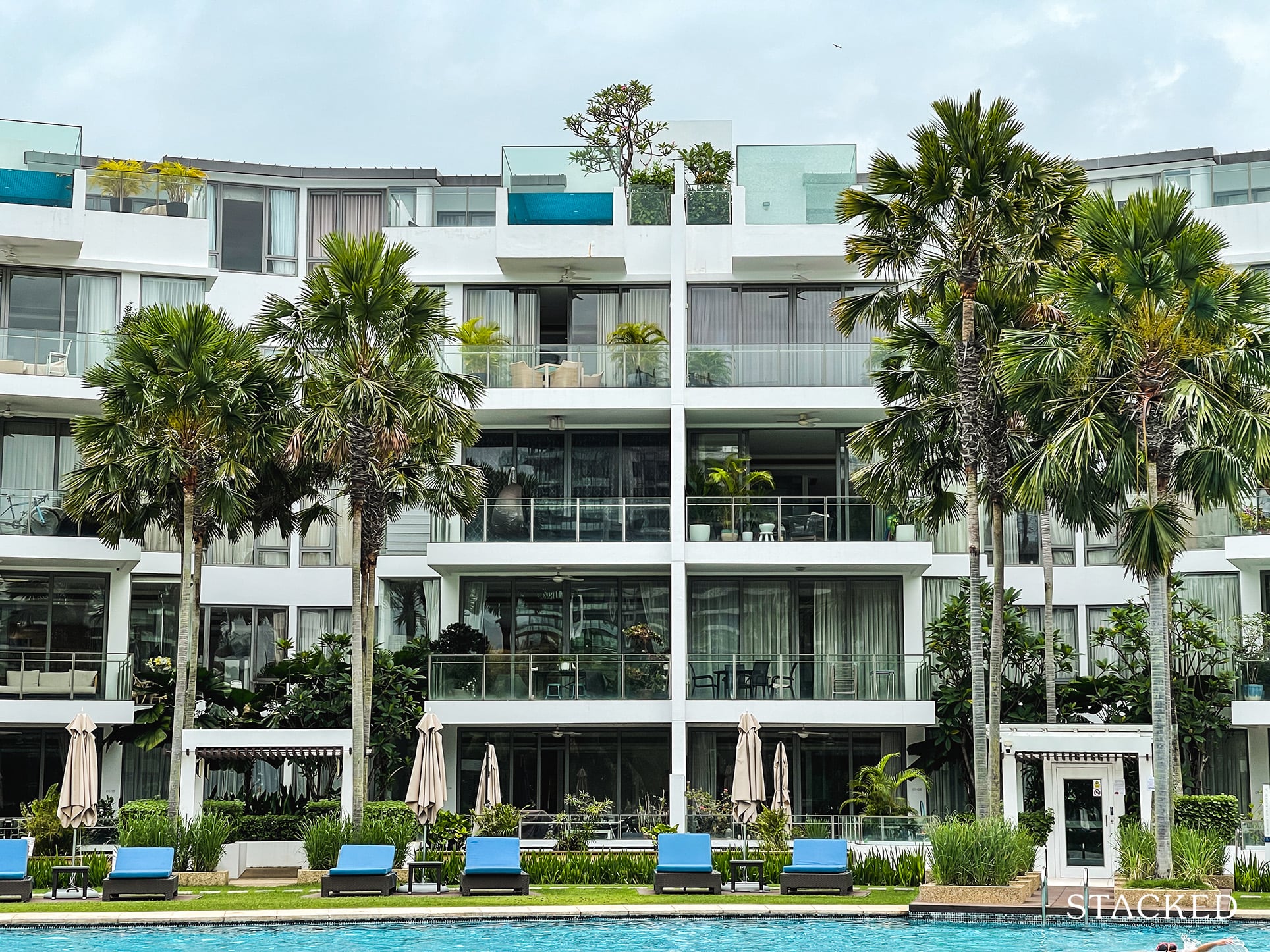
With regard to Sentosa, we’re not too surprised to see it on the list: we’ve covered this unique region in an earlier article. Suffice it to say that Sentosa’s luxury condos are meant to be enjoyed as indulgences, and are less angled toward investment. Sentosa Cove is also really more famous for its bungalows, so its condo segment typically takes a backseat to its landed developments.
Nonetheless, for both Sentosa and the other core region properties, we’re likely seeing the new ABSD measures start to bite. Foreigners now pay 60 per cent ABSD on all residential properties – and the prime regions will bear the brunt of this, as affluent foreigners make up a larger buyer demographic here.
There is another consideration for prime region properties as well: a bigger share of owners here are landlords, looking to rent to the lucrative expatriate market. Due to wider economic issues right now (e.g., the conflict in Europe and the Middle East, and uncertainty over coming US elections), companies may cut back and turn conservative – this could mean fewer expats, or reduced housing allowances. We may be seeing some landlords cutting their losses and reinvesting elsewhere, before the situation gets worse.
Overall, the outlook on the CCR isn’t great right now, and the losses you see here are congruent with that.
2. Almost all transactions involved a quantum of $3 million+
This is interrelated with point 1, in that once a project goes beyond a quantum of $1.8 million, the average buyer is priced out. And the most common buyer of family-sized units, as of 2024, is the HDB upgrader.
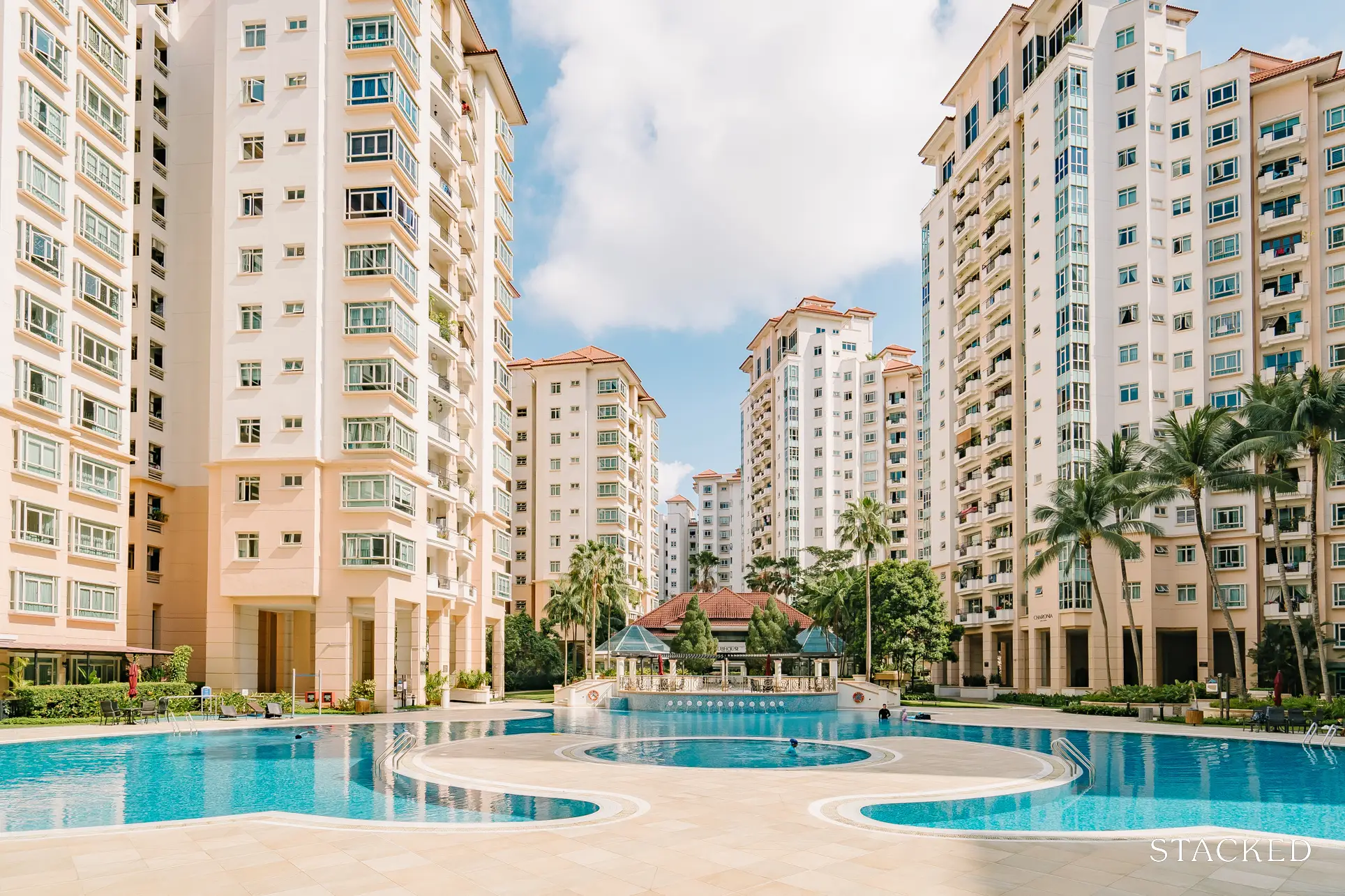
In the OCR, resale condos have a lot of price support, because of rising interest rates and new launch prices. With the typical new launch now at $2,100+ psf, and interest rates creeping toward four per cent, upgraders find resale condos much more palatable (not to overlook the fact that they can move in right away).
Prime region condos, even if they’re resale, lack this benefit. At a quantum of $3 million or above, the prospective pool of buyers will always be small.
3. Substantial holding periods didn’t help to mitigate losses
The top losses seem to defy the conventional wisdom that, so long as you have holding power, you can ride out the downturns. With the sole exception of one unit at Marina Bay Suites, all of the losing transactions had holding periods of over 10 years, with the top three losses having holding periods of over 16 years.
We can also surmise that, for anyone with the budget to purchase such units, being under-capitalised is an unlikely issue. It’s possible that these sellers, despite having all the holding power they need, are simply done with locking up so much capital in a single asset.
This is worth considering, when you’re given the usual spiel about holding power: even if you have it, you may reach a point where holding on longer is not going to reward you.
4. Losses weren’t specific to freehold or leasehold
The top losses have a fairly even mix of freehold and leasehold condos. This suggests that paying the freehold premium didn’t help to mitigate the losses, whilst the lower initial cost of the leasehold condos also didn’t do much to help.
Going back to what we’ve said in an earlier article, this shows that lease status may not have as much of an impact as we think. In the end, factors like market conditions, the total quantum, the location, etc. are the main issues determining resale gains; and freehold status may only pay off in much longer-term situations, such as if the sellers were awaiting a collective sale, or get to the point where the condo is 40+ years old.
(Developers don’t have to top up the lease for freehold properties, which can improve the odds of an en-bloc sale; and financing from banks tends to decrease once there are 60 or fewer years left on a property).
Overall, we can surmise that the Core Central Region (CCR) is likely to struggle a bit in terms of investment performance, at least until the market adapts to the new stamp duties. None of this is a criticism of project quality by the way; the developments above remain some of the more prominent ones. If you do buy them today, purchase them for that reason over financial ones.
Unsure if your property purchase might end up on this list some day? Get in touch with us for an in-depth consultation!
Ryan J. Ong
A seasoned content strategist with over 17 years in the real estate and financial journalism sectors, Ryan has built a reputation for transforming complex industry jargon into accessible knowledge. With a track record of writing and editing for leading financial platforms and publications, Ryan's expertise has been recognised across various media outlets. His role as a former content editor for 99.co and a co-host for CNA 938's Open House programme underscores his commitment to providing valuable insights into the property market.Read next from Property Trends
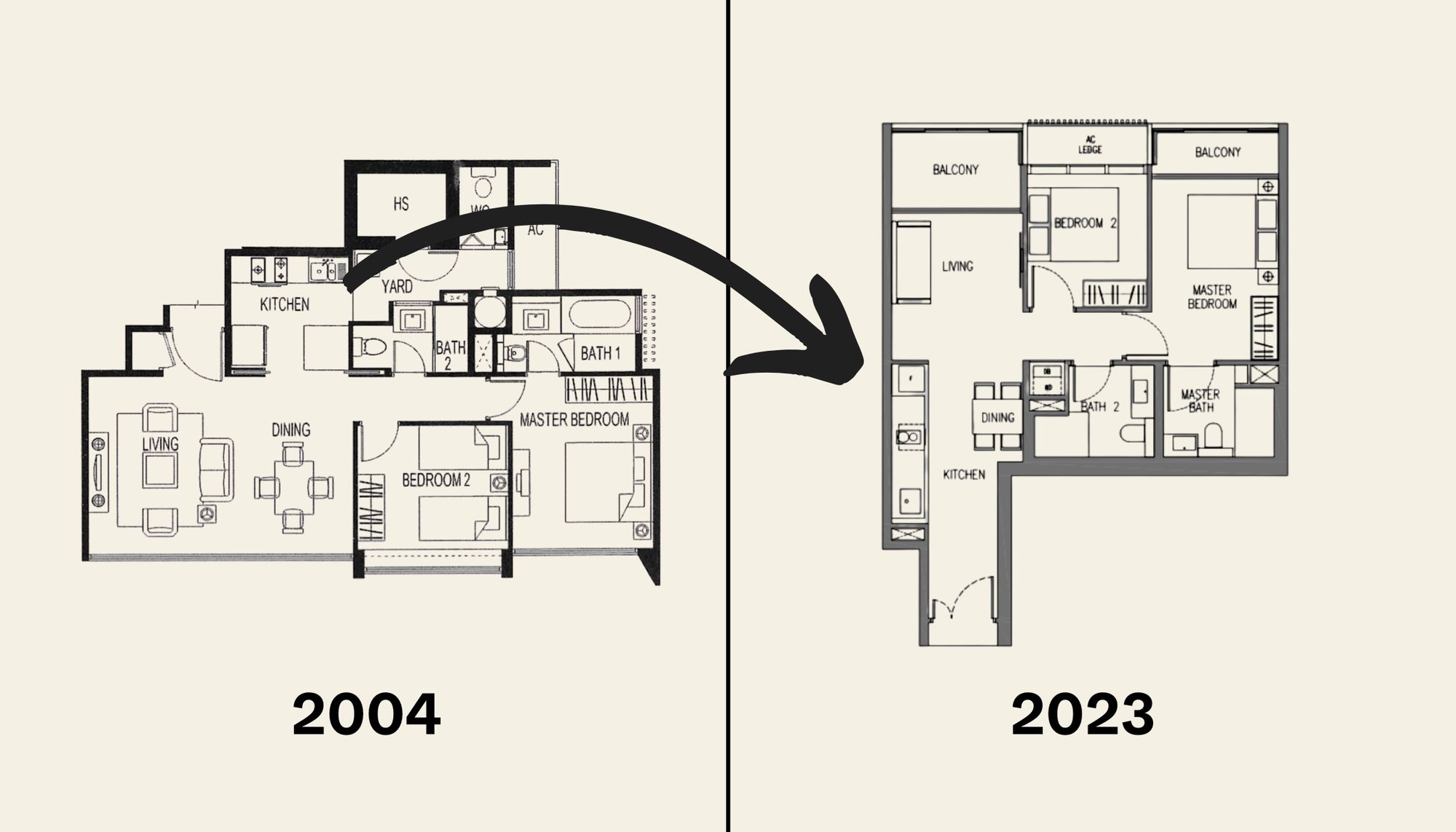
Property Trends The Room That Changed the Most in Singapore Homes: What Happened to Our Kitchens?
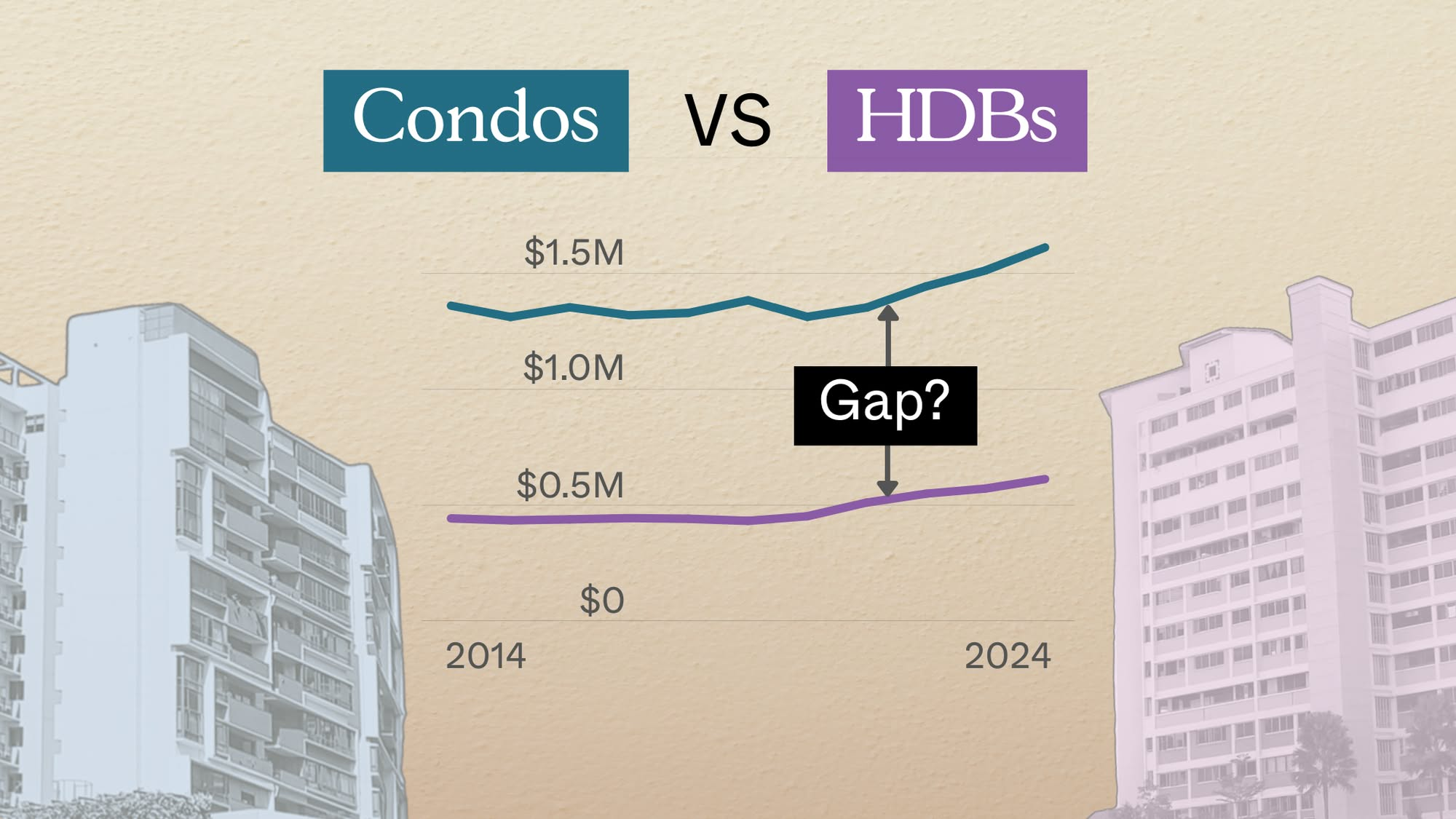
Property Trends Condo vs HDB: The Estates With the Smallest (and Widest) Price Gaps

Property Trends Why Upgrading From An HDB Is Harder (And Riskier) Than It Was Since Covid
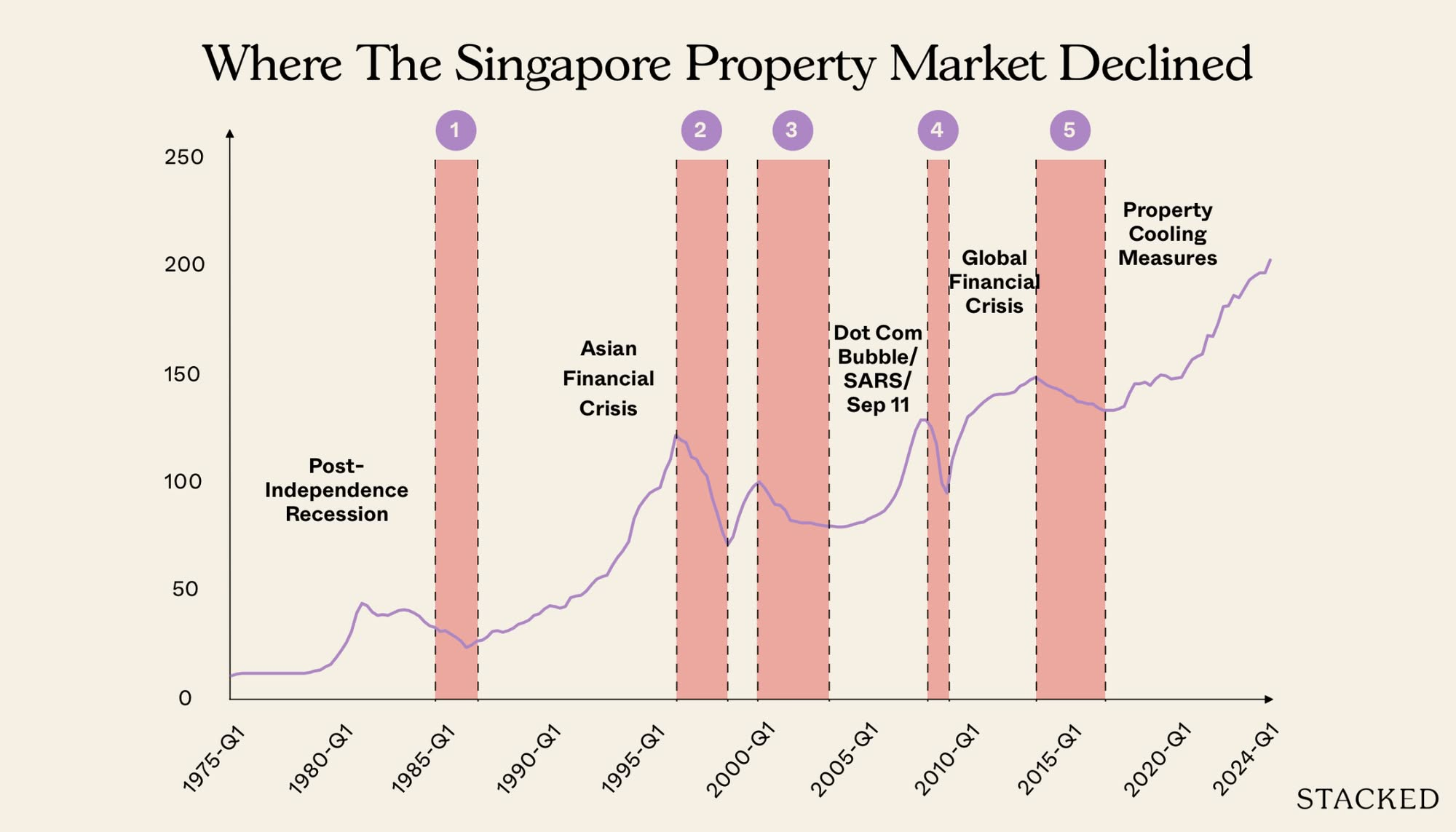
Property Trends Should You Wait For The Property Market To Dip? Here’s What Past Price Crashes In Singapore Show
Latest Posts
Uncategorized
Notre Avis sur Betify Casino – Partie 4
Uncategorized
Notre Avis sur Betify Casino – Partie 207

Editor's Pick Should We Buy An Old 99-Year Leasehold Condo To Live In: Will It’s Value Fall When The Lease Runs Out?

Pro How A Once “Ulu” Condo Launched In 1997 Became A Top Performer

Editor's Pick I Reviewed A New Launch 4-Bedroom Penthouse At Beauty World

Property Market Commentary When Renting In Singapore Is The Smarter Move — And Buying Can Wait

Editor's Pick Why Singaporean Families Are Looking At This Landed Enclave From Around $4M

Singapore Property News Lentor’s First Condo Is Complete — The Early Profits May Surprise You

Editor's Pick A Wave Of New HDB Resale Supply Is Coming In 2026: Here’s Where To Find Them

Property Advice We Own A $800K 1-Bedder And A $1.1M 3-Bedder: Is It Possible To Upgrade To A 4-Bedder Condo?

On The Market These Are Some Of The Cheapest 5-Room HDB Flats Left In Central Singapore

Pro This 698-Unit Ang Mo Kio Condo Launched At The Wrong Time — And Still Outperformed Peers

Singapore Property News $281.2M in Singapore Shophouse Deals in 2H2025 — But That Number Doesn’t Tell the Full Story

Property Market Commentary 5 Key Features Buyers Should Expect in 2026 New Launch Condos

Editor's Pick What “Lucky” Singaporean Homebuyers Used To Get Away With — That You Can’t Today


